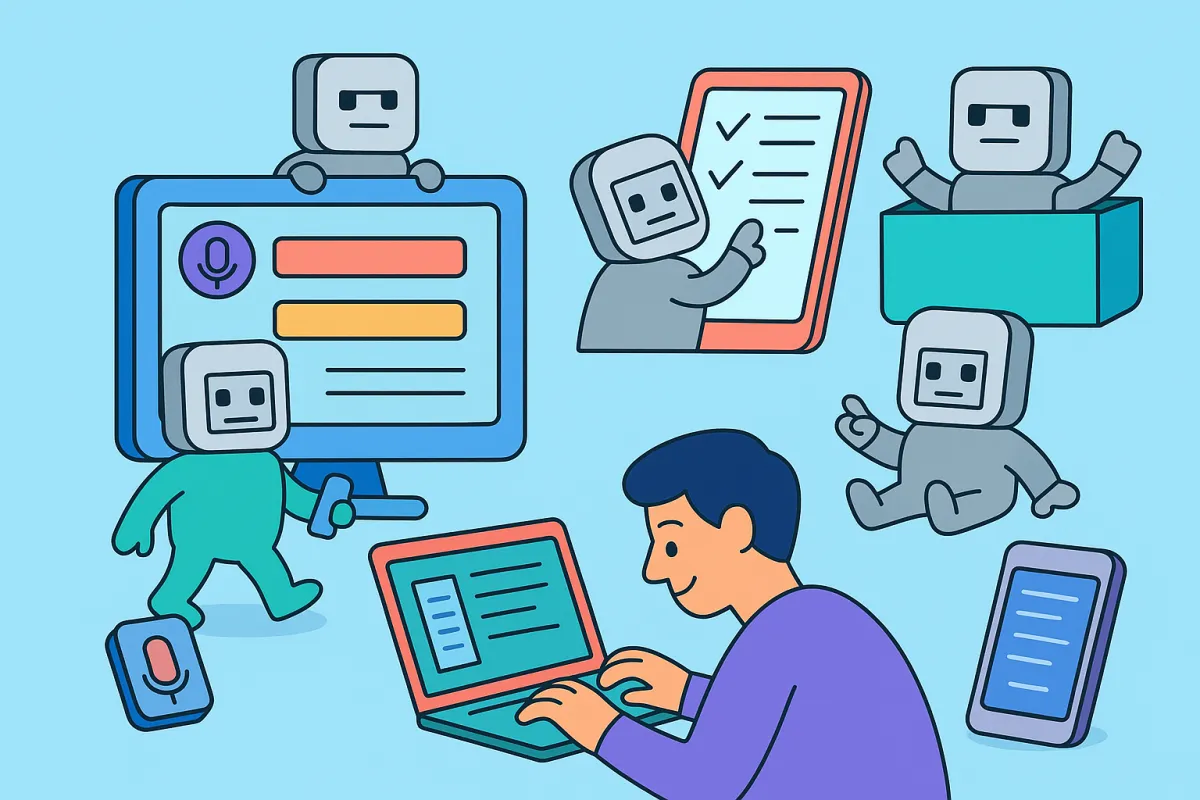
What Are the Different Types of AI Scribes and How Do They Work?
AI scribes are quickly becoming one of the most talked-about tools in psychiatry. They promise to save time, reduce burnout, and let you focus more on patients instead of paperwork. But not all AI scribes work the same way. Depending on your workflow and technology setup, one type may be a better fit for your practice than another.
No matter which route you choose, the end goal is the same: less time charting, more time with patients.
Here’s a breakdown of the main types of AI scribes you’ll see in the market today.
1. EHR-Integrated AI Scribes
These scribes are built directly into your electronic health record (EHR) system. They automatically capture patient conversations and drop the summarized note straight into the patient chart.
Pros:
Seamless workflow—no copy/paste needed
Keeps all documentation in one place
Often includes templates specific to psychiatry
Cons:
Limited to the features of that EHR’s vendor
Switching EHRs means losing the scribe
May come at a higher monthly cost
2. Chrome Extension or Desktop Overlay Scribes
These tools run on top of your browser or desktop while you’re inside your EHR. They “listen” to the visit (or process audio you upload), then create a draft note you can insert into your chart with a click.
Pros:
Works with almost any EHR
Faster adoption, no major setup
Usually more affordable
Cons:
Still requires copy/paste or a plugin
May raise HIPAA/security concerns depending on the vendor
Features vary widely
3. Standalone (Independent) AI Scribes
These are platforms that live outside your EHR. You upload or record the patient session, then copy the finished note back into your chart.
Pros:
Flexible, works with any EHR, even older ones
Typically have the most customization options
Can be used for telehealth, phone calls, or in-person
Cons:
Extra step of moving notes into the EHR
Risk of errors if copy/paste is rushed
Workflow can feel clunky if volume is high
4. Mobile App Scribes
Some vendors provide mobile apps that record visits and return the completed note. Providers either use the phone as a “listening device” during sessions or upload recordings after the visit.
Pros:
Portable, works anywhere (great for telepsychiatry)
Can capture non-EHR encounters like intake calls
Easy to test before committing
Cons:
Not always HIPAA compliant (depends on vendor)
Still requires manual chart entry
Reliability depends on device microphone and internet connection
5. Hybrid AI Scribes
A few solutions blend approaches—for example, they may offer an app, a desktop extension, and direct EHR integrations. This gives you more flexibility but usually comes at a higher price.
So Which One Is Right for You?
The “best” AI scribe depends on your priorities:
If you want seamless documentation → Look at EHR-integrated scribes.
If you want flexibility with your current EHR → Chrome extensions or standalone platforms may be better.
If you need portability → A mobile app scribe might make sense.
If you want all options in one → Hybrid platforms may be worth the investment.
👉 Psychiatrists: Have you tested an AI scribe yet? Which type do you think fits your workflow best?
Take the Next Step: Let’s Talk
Transform your practice and maximize your practice’s potential with coaching services designed to streamline operations, boost revenue, and build a high performing team.
Our Business Coaching services are designed to help practice owners regain control by getting laser focused on the priorities that generate revenue and profits.
Schedule a free 20-minute call to see how MindPractice can help grow your practice. No obligations and no commitments.


